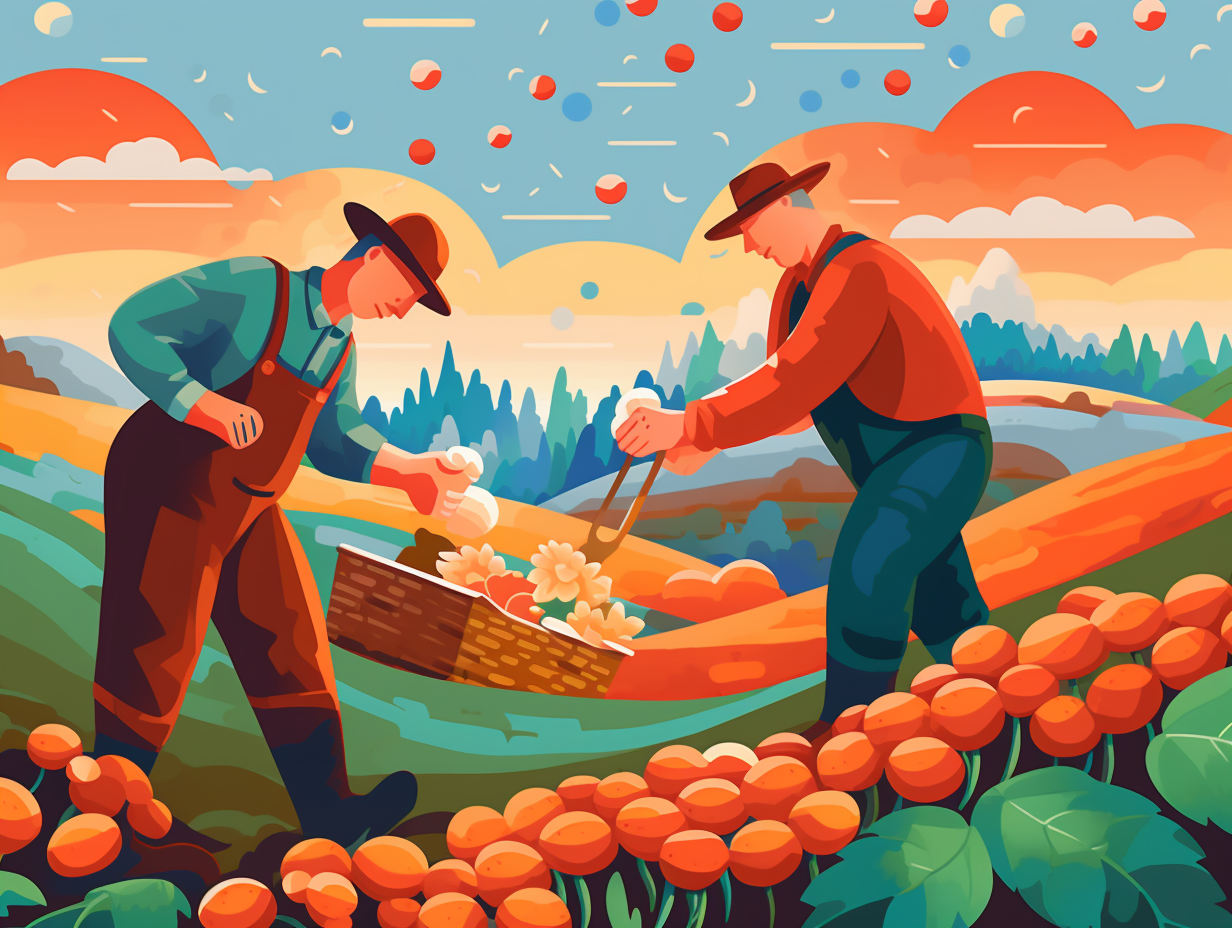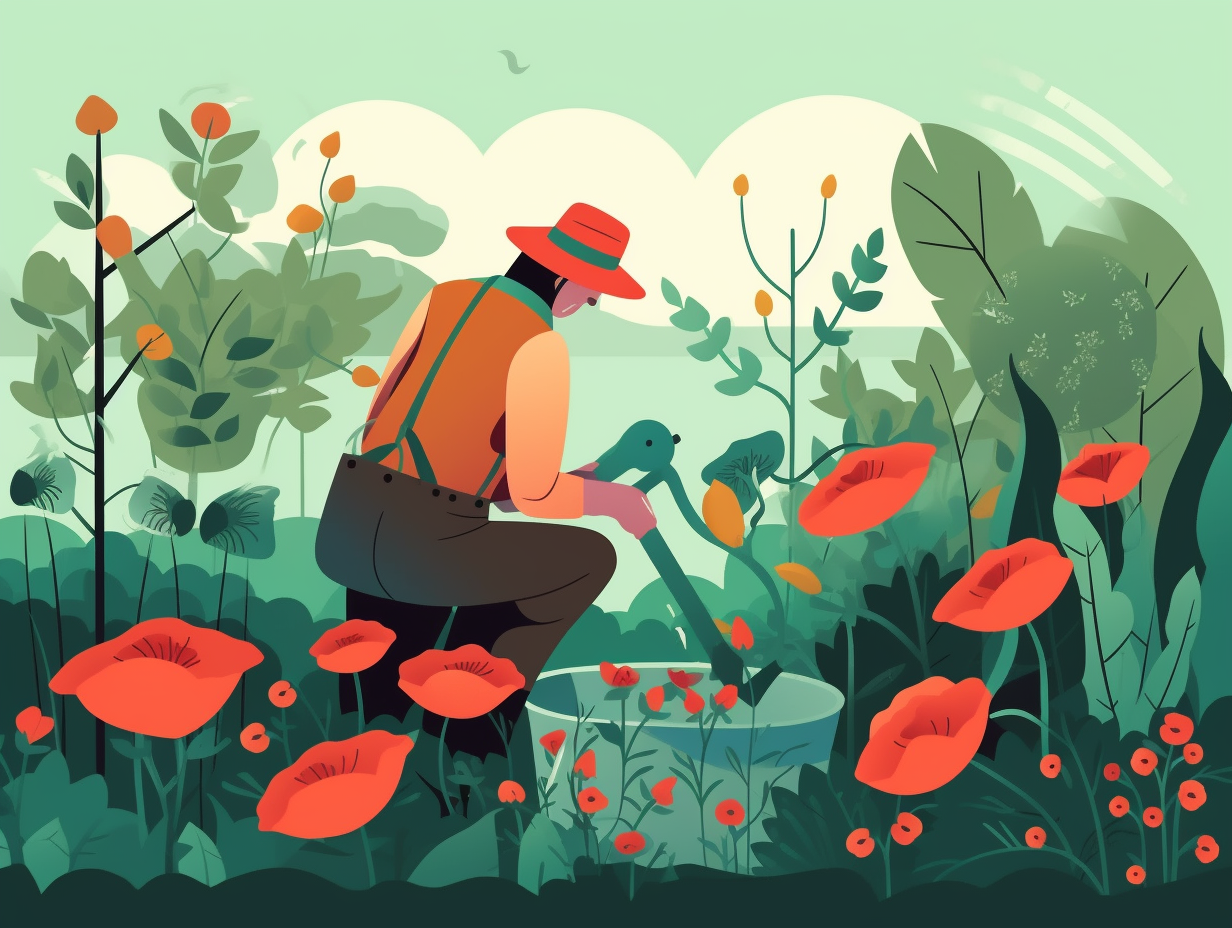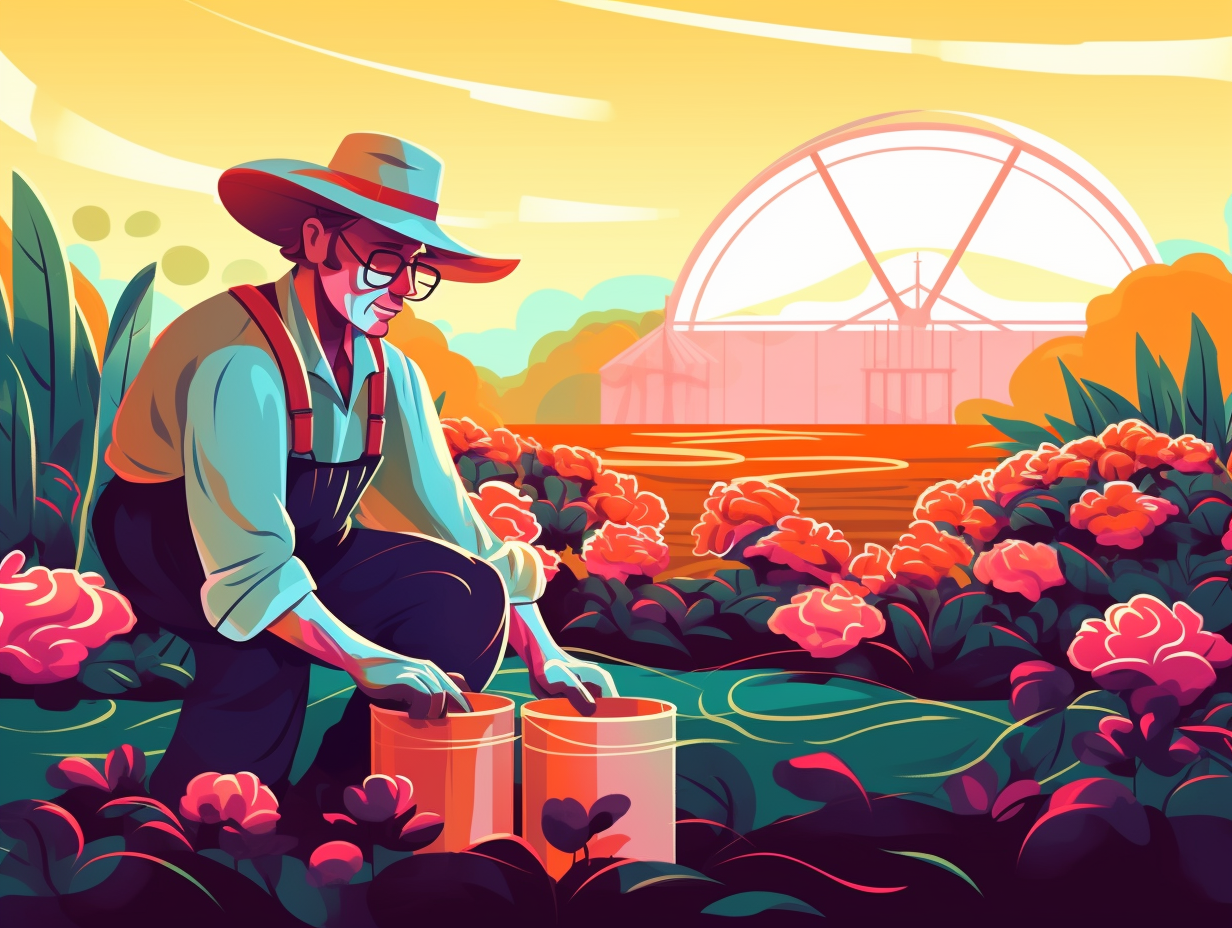Discover the Secret World of Fertilizers: Top 13 Fun and Fascinating Facts You Never Knew!

1. Fertilizer Fowls and Guano Glory
Move over Angry Birds, here come the Fertilizer Fowls: Guano, a natural mixture of seabird droppings, eggshells, and carcasses, has been used as a fertilizer for over 2000 years in Peru, achieving its European fame between the 1840s and early twentieth century. Today, it's still used in some smallholder farming systems and as a rare organic/mineral additive, more for image boosting than for actual agricultural impact.
Source => intechopen.com
2. Power of Pee for Pomegranates
When life gives you lemons, squeeze them into your neighbor's pomegranate tree: Ancient Romans discovered that human urine, normally reserved for cleaning and tanning, was particularly effective in juicing up their pomegranates! Columella, a Roman author, vouched for its nitrogen and phosphorous content, which were essential for plant growth - making pomegranates tastier and juicier, all thanks to the power of pee!
Source => mentalfloss.com

Discover the surprising connection between female voices and thriving plants! Learn how a Royal Horticultural Society study found that tomato plants exposed to women's voices grew taller than those serenaded by men. 🌱🎶👩
=> Fun Facts about Gardening
3. Rock, Manure, Bone Meal Showdown
In the game of life, plants like to play "Rock, Manure, Bone Meal": Believe it or not, some fertilizers are derived from rock minerals, animal droppings, and bone meal, while others are chemically synthesized, impacting the health of plants and the environment, with synthetic options contributing to pollution and natural ones offering nutrient-rich alternatives.
Source => nature.com
4. Burp-Busting Seaweed Solution
Hold your seahorses! The secret weapon against burping bovines is a red seaweed superhero called Asparagopsis: Australian scientists at CSIRO developed a patented, cost-effective livestock feed ingredient using this seaweed, which reduces methane emissions by over 95% when included in less than 1% of the feed. This could have a massive impact on climate change since methane is a potent greenhouse gas, 28 times stronger than CO2. By inspiring just 10% of the world's livestock producers to adopt the seaweed solution, it would be like vanishing 100 million cars from our roads.
Source => dcceew.gov.au

5. Fishy Fertilizer DIY
Whoever said "There are plenty of fish in the sea" must have been a garden guru: Homemade fish emulsion is a cost-effective fertilizer made by layering fish scraps with dried leaves or sawdust in a bucket and adding water to create a nutrient-rich liquid.
Source => thespruce.com
6. Inca's Poo-tent Terrace Technique
Who would have thought that the secret to growing crops on a mountainside was piles of, well, poo-tentially potent stuff? Guano way to go: The ancient Incas ingeniously employed crop rotation and the nutrient-rich benefits of guano as a natural fertilizer, allowing them to successfully cultivate crops on steep Andean terraces and sustain their society for centuries.
Source => en.wikipedia.org
7. Magic Potion of Grass Clippings
Who needs a magic potion when grass clippings can work wonders: Steep them in water for a few days to create a nutrient-rich liquid fertilizer bursting with potassium, nitrogen, and phosphorus, not only giving your plants a natural boost but keeping those pesky clippings out of stormwater runoff and saving the Lagoon from muck accumulation.
Source => savetheirl.org
8. Worms: Slimy DJs of Fertilization
Worms: nature's tiny agriculturalists with a penchant for fertilization mix tapes! In the underground club scene, these slimy DJs spin organic matter into nutrient-rich earthworm castings, releasing the hits "Humus," "Phosphorous," "Magnesium," "Potassium," and "Calcium" with a slow jam of a two-month nutrient release: Not only do these castings boost microbial activity and reduce soil compaction, but they also provide your plants with a healthy serving of nitrogen while keeping the dance floor fertile and fabulous.
Source => soilsalive.com
9. Fungaloes: Root and Fungi Fusion
Don't fungi and plant roots make the best of 'fungaloes', growing strong together like Bonnie and Clyde? Here's the tea on their underground alliance: Ectomycorrhizal fungi and plant roots join forces to exchange elusive nutrients and sugars, boosting the plant nutrition and health, while simultaneously adding long-term carbon removal from the atmosphere to their impressive buddy-cop résumé.
Source => kids.frontiersin.org

10. International Space Salad
In a leafy twist of the classic "farm to table" concept, astronauts aboard the International Space Station have ventured into the realm of "farm to orbit" horticulture: They successfully grew and consumed red romaine lettuce, which was proven to have an acceptable microbial load, despite there being no established standards for fresh produce grown in space.
Source => frontiersin.org
11. Nitrogen Cravings and Eco-Disasters
Who would've thought that plants are just as picky as a toddler who refuses veggies at dinner time? It turns out they crave nitrogen like a chocoholic yearns for a sweet treat: Nitrogen, although abundant in Earth's atmosphere, is often inaccessible to plants, causing deficiencies in soil that can be remedied with fertilizer. However, just like eating too much candy can wreak havoc on our tummies, the overuse of nitrogen fertilizers can result in devastating environmental issues like eutrophication and dead zones in aquatic ecosystems.
Source => kids.frontiersin.org
12. Sewage to Fertilizer Drama
When life gives you sewage, make fertilizer: Biosolids, a contentious and frugal alternative to synthetic fertilizers, are derived from treated sewage sludge and raise concerns about the potential health and environmental risks associated with their use, with many advocating for stricter regulations to safeguard its application.
Source => civileats.com
13. Bat Guano: Caped Crusader of Fertilizers
Move over, Batman, there's a new hero in town – Bat Guano: an all-natural fertilizer, containing about 10% nitrogen, 3% phosphorous, and 1% potassium, plus all the minor and trace elements needed for a plant's wellbeing. Lacking fillers found in artificial gardening products, guano's versatile superpowers can be used for vegetables, herbs, flowers, ornamentals, and even fruit and nut trees, both indoors and outdoors. This caped crusader of fertilizers helps build soil texture and richness year-round and doubles up as a rapid compost activator.
Source => batcon.org
Related Fun Facts




















